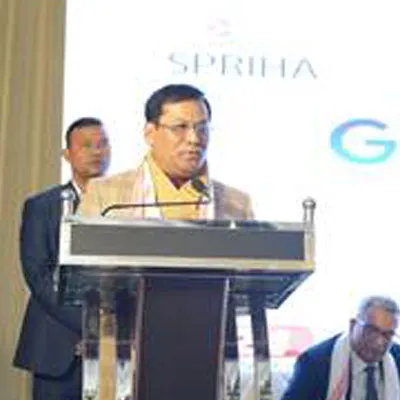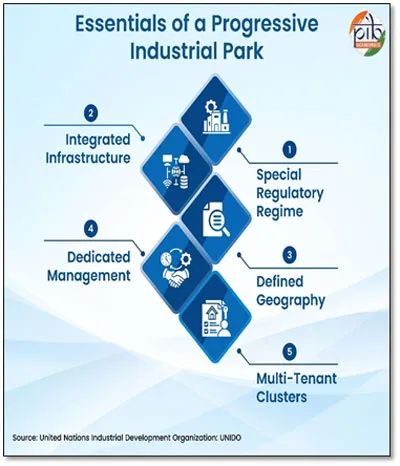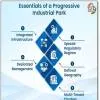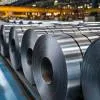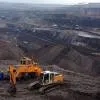An overhaul in mining policy promises to increase yields for equipment providers and organised companies.
Of all mining equipment globally, surface mining equipment enjoyed the highest market share, around 31 per cent, in 2015. Mineral processing equipment, underground mining equipment, mining drills and breakers, crushing, pulverising and screening equipment, and other mining equipment lagged behind.
In India, surface mining equipment inclusive of trucks enjoys 30 per cent of the market; sans trucks surface mining enjoys 20-22 per cent of the market, says Rakesh Choubey, Head-Marketing & Business Development,
Belaz-Enrika Mining Equipments Services. But it is not the fastest-growing mining equipment.
´In 2015, surface mining had a share of 45 per cent of our business which spans equipment, consumables and spares or service,´ says Sanjay Ahuja, General Manager-Mining and Rock Excavation Technique, Atlas Copco (India).
Growing most rapidly
Between 2016 and 2020, mining drills and breakers are projected to be the fastest-growing mining equipment segment globally because of their increasing application in metal mining. In India as well, metal mining, in particular, new iron ore blocks and the resumption of mining in Karnataka and Odisha will grow the surface drills business, opines Anil Martyris, Business Head for Surface Drills, Sandvik India. However, in India, mining drills and breakers will see a boost from other segments too.
´Big private-sector cement players expanding capacity in preparation for the envisaged increase in demand from upcoming infrastructure projects and smart cities, and the dimension stone and aggregate sectors catering to road projects are increasing demand for surface drills,´ he adds. ´Steady demand for rotary drill rigs for coal mining will continue in the next five years.´
The request from the Ministry of Mines and Steel to mining companies, to allocate a tenth of their profits to exploration projects to boost mining in the country, is likely to increase demand for exploration drills for core drilling, says Martyris.
Coal mining faces price glitches
Coal India´s ambitious plans to double production over the next five to six years were expected to give coal mining a mega boost, but so far things are progressing slower than anticipated.´Production by Coal India is growing at 6-7 per cent as against the 9-10 per cent envisaged in the first two years,´ says Shib Bhowmik, Country Head & Managing Director, Joy Global India, who is sceptical about the prospects for demand.
´Globally, after five years of decline, coal prices have rallied substantially since January 2016, mostly as a result of China curtailing domestic production and sourcing from the global market,´ he adds. ´In India, landed coal prices have risen by 20-25 per cent, but unless prices rise by another 20-25 per cent, mining will still not be remunerative for companies having aggressively bid for the 34 coal blocks that have been auctioned.´
In fact, Bhowmik believes that players who were awarded projects as a result of those aggressive bids may find it cheaper to import coal, even with the fine tagged on for not producing, given that low coal prices are about half of the highs of 2008. Additionally, India´s ratification of the Paris climate change agreement does not bode well for the future of coal mining, he says. ´So, a lot hinges on India´s GDP growth; high growth may boost demand.´
However, scope for equipment grows
Some developments in the coal segment do bode well. ´Now, the shift towards the Mine Developer Operator (MDO) concept will boost the uptake of mining equipment because it is mandated in terms of the concession agreement, at most, after a grace period of a year or two,´ says Balakoti Reddy, Vice President, BGR Mining & Infra. ´Opportunities will arise for 100-tonne dumper trucks, 10-12 cu m bucket capacity shovels or excavators and surface miners. We will not invest in too many models as that causes standardisation and storage challenges.´
Linking coal prices with the gross calorific value has put more attention on crushing, sizing, screening and pulverising equipment, bomb calorimeters, etc, according to Choubey. ´Newer coal washeries and coal handling plants with the latest industry-specific technologies are coming up, which will contribute to the growth of coal handling and quality machineries,´he says.
Coal India is continuing to invest in equipment for its surface open-cast mines as well as underground mines, says Martyris. Sandvik can fulfil both these needs, with an indigenous rotary blast hole drill of 6-1/4ö capacity, which is seeing significant demand in surface coal mines, and bolter miners, shuttle cars, feeder breakers and low-capacity continuous miners for underground mines.
´Coal India has been a big buyer since 2015, adding equipment for new mines as well as replacing ageing fleet, creating a big pull for Rotary Blasthole Drills in most subsidiaries. Another driver has been Singareni Collieries, which is buying equipment as well as creating opportunities by outsourcing overburden removal, which in turn fuels demand for drills,´ said Ahuja.
Coal India is prioritising advanced mass production underground mining technology, like long wall systems and continuous miners for room and pillar mining, says Bhowmik. Joy Global offers both these solutions, which increase safety by reducing the man-machine interface.
Growing concern for quality, the environment and better utilisation of surface lands in open-cast projects is spurring the use of surface miners, points out Choubey. This is, in turn, reducing the need for drills, breakers, excavators and large-size hauling trucks.
Deterrents to advanced mechanisation
So far, outsourcing contractors engaged in overburden removal in coal mining have typically deployed construction equipment, essentially because they have aggressively bid for contracts and need to limit investments, observes Reddy. Additionally, Coal India´s policy to award short to medium-term overburden removal contracts, say for three to five-year durations, probably because of its own land acquisition issues, deters subcontractors from investing in better technology and capital-intensive machines, says Bhowmik. ´Many such contractors tend to use depreciated construction equipment.´
Another dissuading fact is that most surface mines in India are patch workings; that is, low-capacity surface mining projects, observes Choubey. Interestingly, however, the preference of contractors for less capital-intensive machineries with alternative uses, like in construction projects, has substantially grown the population of tipping trucks and excavators of 1 to 3 cu m capacity, he adds.
´Subcontractors engaged by Coal India mostly use excavators for the removal of overburden in mining applications,´ says
Dimitrov Krishnan, Vice President and Head of Volvo CE India. ´Mining companies favour higher-capacity excavators, in the class of 50 tonne and higher. Of all the excavators between 50 tonne and 100 tonne that Volvo CE sells, over half are sold to customers for use in the mining industry.´
Logistic pains
A strong transportation network is essential to the success of India´s coal mining industry, not least because of the requirement to move mined coal almost immediately after removal from the ground to ensure optimal quality, observes Krishnan, who is confident that resources are in place to ensure improvements in rail and road networks. The ultimate goal is obviously to eliminate transport infrastructure problems in the remote parts of the eastern states where much of India´s coal is to be found.
Rail connectivity was in place for underground coal mines producing as little as 100 tonne per day, says Choubey. ´That type of holistic planning of transportation links and proper logistics infrastructure is required for all adequate evacuation from all volume-eccentric projects and coal mines, which is currently a constraint.´
And, according to Martyris, at present, ´Infrastructure and approach roads to remote mine sites as well as basic facilities at these remote sites - proper camps, clean water and boarding facilities - remain a critical challenge for mining companies.´
Iron ore mining opportunities
Decisions to invest in equipment are based on mining conditions, reserve, capital investment capacity, etc.
´Mining ore companies typically invest in bucket-wheel excavators, excavators, rigid-body rear dumpers, crawler dozers, loaders, RBH and DTH drills,´ says Choubey. ´They also use iron-ore processing machines like conveyor systems, crushers and magnetic separators.´
Companies engaged in iron-ore mining have been investing in high-productive hydraulic top hammer drills for bench drilling as well as crushing and screening plants and screens, according to Martyris.
And, Krishnan tells us, ´Companies engaged in iron-ore mining typically favour Volvo´s EC480D and EC380D excavators, which have bucket capacities of 3.1 cu m and 2.3 cu m, respectively, and we´ve also been seeing rising demand for the EC350D, which has a maximum bucket capacity of 2 cu m. All three deliver higher productivity, greater reliability and easier usage through their inclusion of a more comfortable operating environment.´
´Demand from the iron-ore segment, the third largest mining segment after coal and limestone, has been muted for a while, but auctioning of fresh mine leases in Karnataka will provide some succour to demand for surface down the hole and top hammer drills,´ says Ahuja.
Bhowmik is of the opinion that considerable idle mechanisation capacity in the iron ore mining segment and India´s overall small and scattered iron-ore mines are keeping demand for equipment low and prompting some players to use construction equipment on site.
Evidently, modernisation in Indian mines has a long way to go.
Quick Bytes
- Surface mining equipment enjoys 30 per cent of the market.
- Mining drills and breakers projected to be fastest-growing globally from 2016-20.
- Growing concern for quality, the environment and better utilisation of surface lands in open-cast projects is spurring the use of surface miners.
- Steady demand for rotary drill rigs for coal mining will continue in the next five years.
To merchant mine or not
India´s current coal policy, which gives the state a monopoly on coal mining and allocates captive mines to a few chosen power companies and other players, has created a domestic coal shortage despite huge reserves. In turn, this artificially created scarcity has turned the spotlight on merchant mining. Opening up coal mining to professional mining companies would help create a supply chain for industries needing the material at a standard rate benchmarked against imports.
Merchant mining was expected to be introduced in steps, including the auction of mines to state units and public-sector companies, to establish a supply chain for small industries, and subsequently auction to private entities for commercial mining. But by and large, industry players think merchant mining is still some time away. Merchant mining is not likely to happen soon; low coal prices and the low quality of coal produced in India are two deterrents, says Shib Bhowmik, Country Head & Managing Director, Joy Global India.
Merchant mining will take off in due course, believes Rakesh Choubey, Head, Marketing & Business Development, Belaz-Enrika Mining Equipments Services. ´It will take time mainly because demand for raw materials is low at present, given the greater attention to renewable energy and the state of the economy.´
Productivity-enhancing technologies
When buying a mining machine, here are some useful technologies to ask for, which have seen adoption by mining companies in India.
Ashim Kumar Mukherjee, former Advisor & Chief Manager, Northern Coalfields,
Excavation Department, elaborates:
- Advanced low-cost sensors: Many mining companies rely on sensors to enhance fuel economy in diesel-powered machines. Sensor-enhanced performance can improve the efficiency of ventilation fans, thereby reducing cost. Sensor-based pay load monitoring and vehicle health monitoring systems are integral components of today´s heavy earthmoving machineries deployed in surface mines.
- RFID: Coal India, in some advanced mines, and private mining companies are providing miners with radio frequency identification (RFID) tags to help locate them in case of any distress. RFID tags are also being used to locate spare parts in large stores.
- Wireless technology: Proximity and warning devices based on wireless technology are being widely used in rigid body dump trucks operating in open-cast mines, to make the operator aware of nearby objects that may cause unwanted impact or collide with moving dumpers. Wireless technology is also used for underground machines, observing and recording different physical parameters like deflection of hydraulic props under varying roof load or any sudden increase in roof load.
- Radar technology: Northern Coalfields and South Eastern Coalfields are using radar technology in open-cast mines to monitor slope stability and in underground mines for the detection of any abnormal roof behaviour, possible roof fall or subsidence.
- Robotics: Robotics can be effectively incorporated in mining machinery for automation, to help gather information remotely, such as in highwall mining systems deployed in the Chirimiri Coalfield to assess the gas condition underground.
- Autonomous vehicles: Remote-controlled autonomous machines can be used to extract minerals from difficult, dangerous areas in underground mines.
- Telematics: Telematics together with a GPS-based fleet tracking system is now being widely used in open-cast mines. An example is Northern Coalfields, a subsidiary of Coal India. This technology is used to track loaded dumpers, whether in the quarry or on the road for despatch, to know the real-time complete status of every machine deployed in open-cast mines. Such monitoring helps prevent theft and pilferage, control costs, prevent machine idleness and improve overall mine productivity through the better utilisation of available resources.
-
Charu Bahri
To share your views on the Mining Equipment market in India, write in at feedback@ConstructionWorld.in

